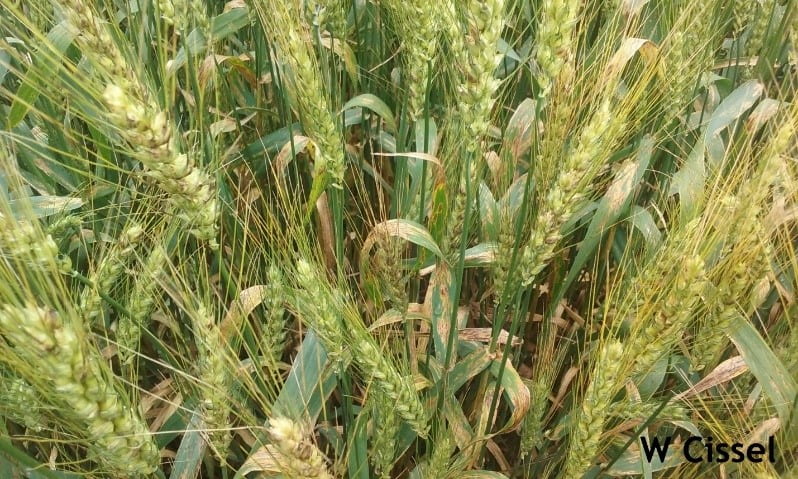Bill Cissel, Extension Agent – Integrated Pest Management; bcissel@udel.edu
Congratulations to Roger Schmick for identifying the disease in this past week’s Guess the Pest and for being selected to be entered into the end of season raffle for $100 not once but five times. Everyone else who guessed correctly will also have their name entered into the raffle. Roger will also receive a FREE copy of A Farmer’s Guide to Corn Diseases. Click on the Guess the Pest logo below to participate in this week’s Guess the Pest! For Guess the Pest # 9, we will also be giving away A Farmer’s Guide To Corn Diseases ($29.95 value) to one lucky participant.

http://www.plantmanagementnetwork.org/book/cornfarmersguide/
Guess the Pest Week #8 Answer: Stagonospora Glume Blotch – Nathan Kleczewski, Extension Specialist – Plant Pathology; nkleczew@udel.edu; @Delmarplantdoc
Stagonospora glume blotch is our most common fungal disease on wheat grown in the region. The pathogen survives and thrives in residue. During warm, wet periods, spores are produced on the residue, which spread onto nearby small grains. Disease progress is fairly slow, and it can take nearly two weeks for new spores to be produced after foliage has been colonized. The disease can infect the glumes, which can be particularly impactful in terms of reducing yield and grain quality. On the glumes, infection typically is observed as black lesions which turn grey over time. Black spots or bumps can be viewed within these grey lesions. This separates glume blotch from other causes of darkened heads, such as bacterial infections, black point, viruses, and varietal traits. On leaves, lesions generally have a “cat’s eye” shape, and can coalesce and expand. Stagonospora glume blotch is most severe when infections of the flag leaf and glumes occur. Management starts with the selection of a variety with good to excellent resistance to glume blotch. Resistant varieties are extremely effective, and if planted, can reduce the need for additional fungicide applications during disease-favorable seasons. Fungicides applied between flag leaf emergence and flowering will be the most efficacious in managing this disease. Practices that reduce residue can further reduce local outbreaks.
Guess the Pest # 9
Guess the Pest! What pest caused this damage?
To submit your guess click the Guess the Pest logo below or go to: https://docs.google.com/forms/d/e/1FAIpQLSfUPYLZnTRsol46hXmgqj8fvt5f8-JI0eEUHb3QJaNDLG_4kg/viewform?c=0&w=1






